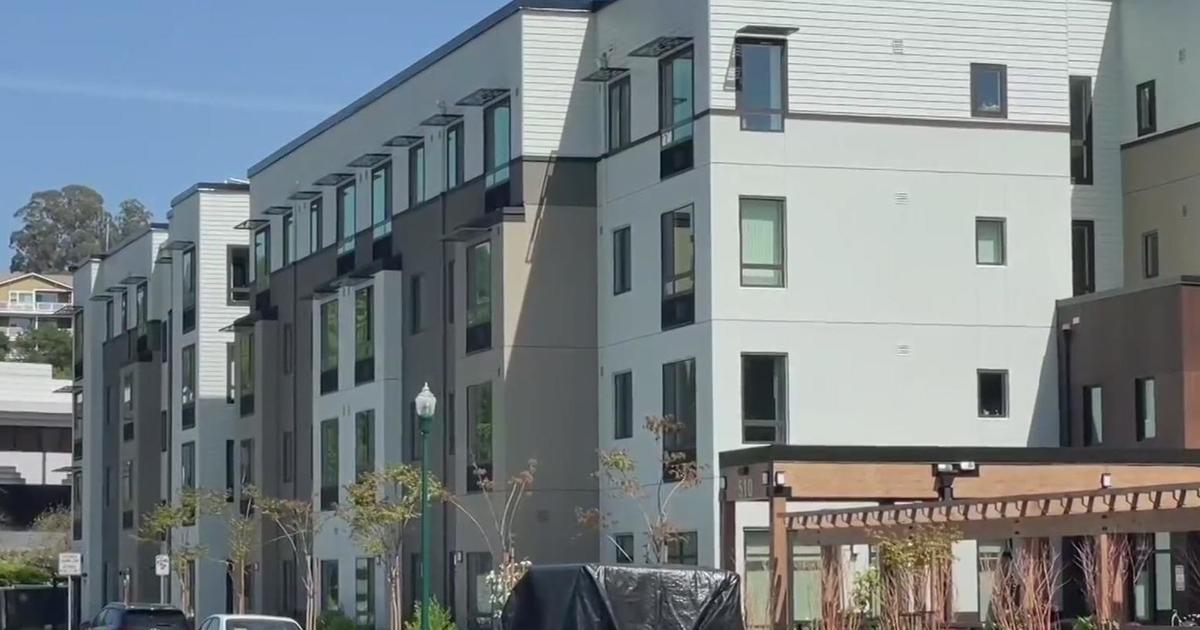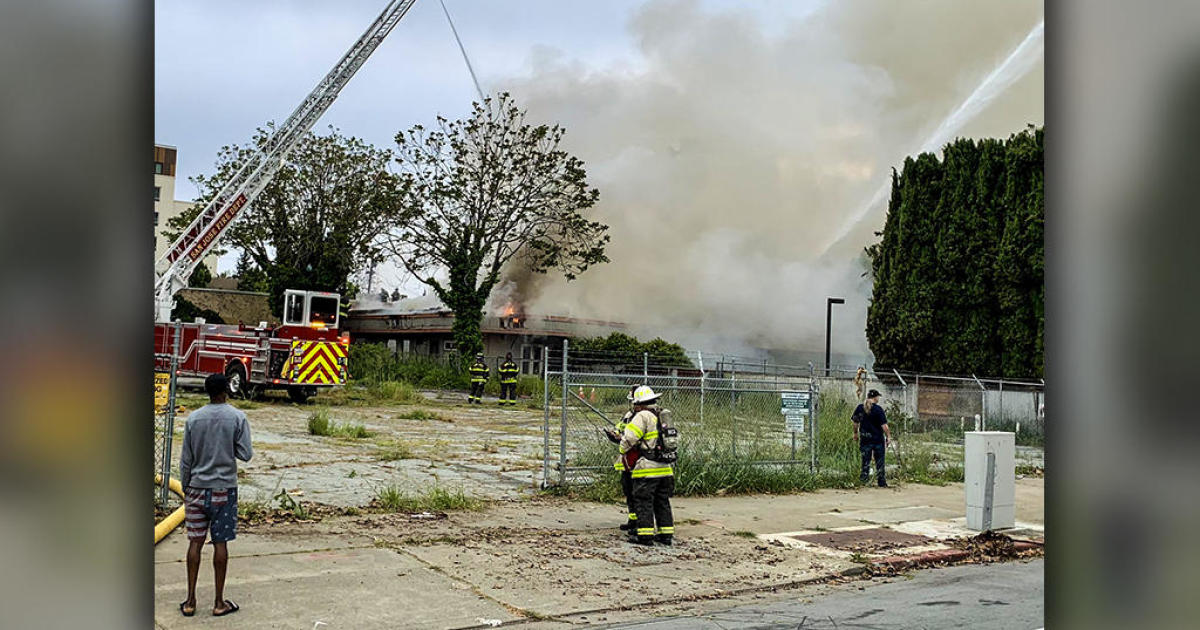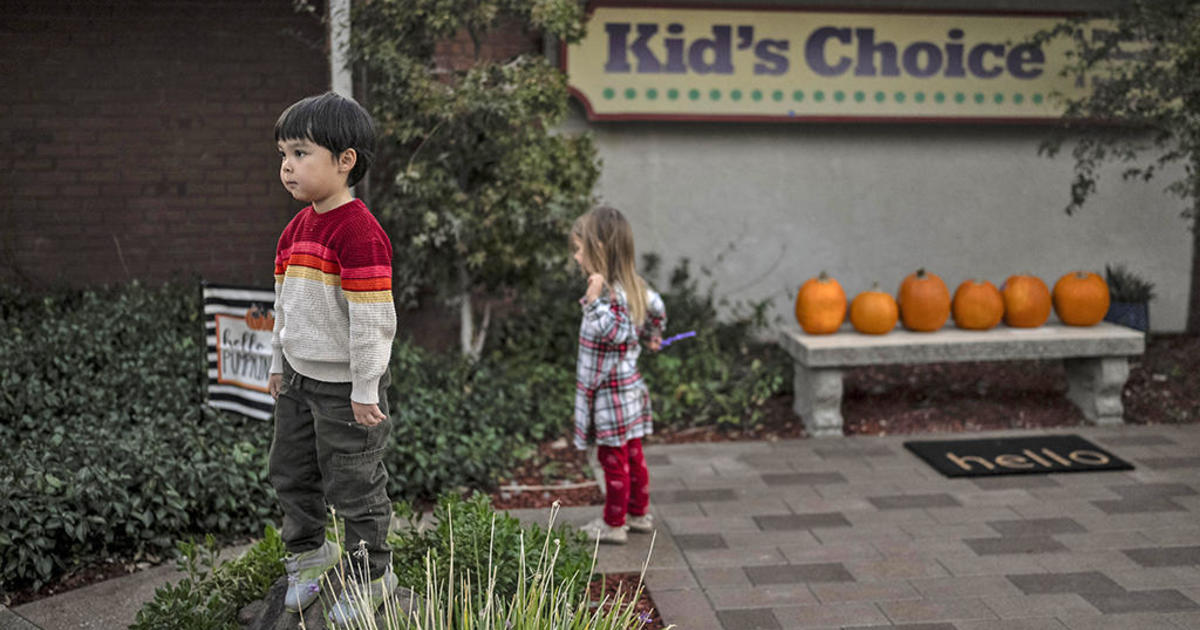I-5 In Southern California Reopens After Flash Floods, Mudslides Strand Hundreds Of Vehicles
LOS ANGELES (CBS/AP) -- Rescuers threw ladders and tarps across mud up to 6 feet deep to help hundreds of trapped people from cars that got caught in a roiling river of mud along a major Southern California trucking route, a California Highway Patrol official said Friday in what he and other witnesses described as a chaotic scene.
Amazingly, officials said, no deaths or injuries were reported.
The people rescued from State Route 58, about 30 miles east of Bakersfield, were stranded in a powerful storm on Thursday evening. They were rescued in darkness about 10 hours after the storm hit and taken to three shelters.
"It was terrifying," 51-year-old Rhonda Flores of Bakersfield told The Associated Press on Friday. "It was a raging river of mud. I've never experienced anything like it, ever."
Flores said she, her mother and her stepfather were driving back to Bakersfield from her sister's funeral in Utah when the storm hit out of nowhere.
"It started raining, and it kept raining, the water started to build up and the mud started coming," Flores said from the church where she, her family and about 150 other people sheltered overnight. "The water's rushing by, the mud's rushing by, then pieces of trees started coming by and the water was past our doors."
Flores said the trio was prepared to jump out of the windows if the water got any higher. Luckily, it subsided.
"I'm feeling blessed that we are here," she said.
Sgt. Mario Lopez, a spokesman for the California Highway Patrol, was at the scene as people were being rescued and said it was sheer chaos.
"I've never seen anything like this before," Lopez said. "The whole side of the hill just came down onto State Route 58 ... There's no highway."
The storms unleashed flash flood and debris flows along the 58, the Interstate 5 and in two small mountainside communities, where at least a dozen homes were reported damaged.
Lopez said it will take days to reopen State Route 58, a mile of which is choked with mud between 2 and 6 feet deep. About 200 cars and semi-trucks were trapped in the now-hardened mud, frozen in place at odd angles.
Hundreds of semis were backed up for 10 miles on the freeway at one point Friday because of the closure. Lopez said they would likely eventually be turned around.
Emergency crews were working to dig out head-high mounds of mud from the 58 and Interstate 5, which was also shut down as hundreds of cars were trapped in the mud Thursday.
The affected section of Interstate 5, one of the state's major north-south arteries, carries traffic among steep mountains over a pass rising to an elevation of more than 4,100 feet between the Central Valley and metropolitan Los Angeles.
The northbound lanes of the freeway and two southbound lanes were reopened Friday afternoon.
Lake Hughes, a tiny mountainside community in northern Los Angeles County, also was in the path of Thursday's storm.
Melissa Nuesca said she and her husband had just picked up their two children from school in the Lake Hughes area when they found themselves surrounded by mud and water. They fled their car in pelting rain and hail, climbed onto the roof, and eventually found their way to safety.
"It was really scary," said Nuesca's 11-year-old daughter, Sarah. "Me and my brother both thought we were going to die that night."
Nuesca said the family got out of the car "just in time" after she reassured the children, "We're not going to die."
The mud covered their car, solidifying inside and filling up the front seat up to the dashboard.
Los Angeles County Fire Department Capt. Keith Mora said the agency 14 people and eight animals in the Lake Hughes area, some from atop cars. Many more were able to walk to safety after waiting out the flood on top of their own vehicles, he said.
Los Angeles County firefighters were going house to house on Friday checking on any stranded occupants.
At least a dozen homes in the area were damaged by the mud flows, said Kerjon Lee, a spokesman for Los Angeles County Department of Public Works.
He said more than that could be damaged, but crews had to bust through blocked roads before they could get an exact count.
Bill Wells, a local rancher, was walking through the area looking for his livestock on Friday morning.
"I think my livestock was swept away and penned against the fence. I think they're all dead," said Wells, who was near tears.
The thunderstorms were powered by a low pressure system pulling in moisture from the south. As much as 1.45 inches of rain fell in a quick span of time near where the most intense flooding occurred.
National Weather Service meteorologist Robbie Munroe said it's too early to say whether Thursday's storm was connected to the El Nino phenomenon that experts say has formed in the Pacific Ocean.
Historically, he said, an El Nino brought on by a warming of Pacific Ocean waters doesn't usually bring heavy rain to Southern California before November. This El Nino has been forecast to bring above-average precipitation to Southern California during January, February and March.
The National Weather Service said a flash flood watch would be in effect again Friday afternoon and early evening for the mountains and deserts because of the continuing threat of severe and slow-moving thunderstorms.
© Copyright 2015 The Associated Press. All Rights Reserved. This material may not be published, broadcast, rewritten or redistributed.



